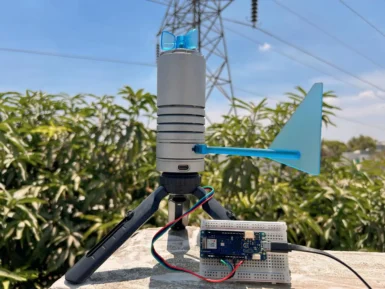
Gravity: 27 Pcs Sensor Set for Arduino
Sold outExcellent bundle with some of the most popular sensors: start measuring light, gas, sound, touch, distance and many other things!
Overview
- Relay Module V2
- Digital RED LED Light Module
- Digital White LED Light Module
- Digital Green LED Light Module
- Digital Blue LED Light Module
- Analog Grayscale Sensor
- LM35 Analog Linear Temperature Sensor
- Analog Ambient Light Sensor
- Digital Vibration Sensor
- Digital Tilt Sensor
- Digital Push Button
- Capacitive Touch Sensor
- Digital magnetic sensor
- Analog Sound Sensor
- Analog Carbon Monoxide Sensor (MQ7)
- Analog Voltage Divider
- Piezo Disk Vibration Sensor
- Analog Rotation Sensor V2
- Joystick Module
- Flame sensor
- Triple Axis Accelerometer MMA7361
- Digital Infrared motion sensor
- Sharp GP2Y0A21 Distance Sensor (10-80cm)(3.94-31.50")
- Soil Moisture Sensor
- Digital Push Button (Red)
- Digital Push Button (White)
- Steam Sensor
The wiki for these sensors and devices makes it easy to start learning. So save by purchasing them together and start experimenting now!
Get Inspired
Using the Garmin LIDARLite v3HP, Arduino MKR WIFI 1010 and Pushsafer to detect an intruder and send a push notification to a smartphone.

Being able to monitor the weather in real-time is great for education, research, or simply to analyze how the local climate changes over time. This project by Hackster.io user Pradeep explores how he was able to design a simple station outdoors that could communicate with a cloud-based platform for aggregating the sensed data. The board Pradeep selected is the Arduino MKR WiFi 1010 owing to its low-power SAM D21 microcontroller and Wi-Fi/BLE connectivity for easy, wireless communication. After configured, he connected a DFRobot Lark Weather Station, which contains sensors for measuring wind speed/direction, temperature, humidity, and barometric pressure — all in a compact device. Every second, the MKR WiFi 1010’s sketch polls the sensors for new data over I2C before printing it to USB. The cloud integration aspect was achieved by leveraging Qubitro’s platform to collect and store the data for later visualization and analysis. To set it up, Pradeep created a new device connection and copied the resulting MQTT endpoint/token into his sketch. Then once new data became ready, it got serialized into a JSON payload and sent to the topic where a variety of widgets could then show dials and charts of each weather-related metric. To read more about this DIY weather station, you can visit Pradeep’s project write-up here.








